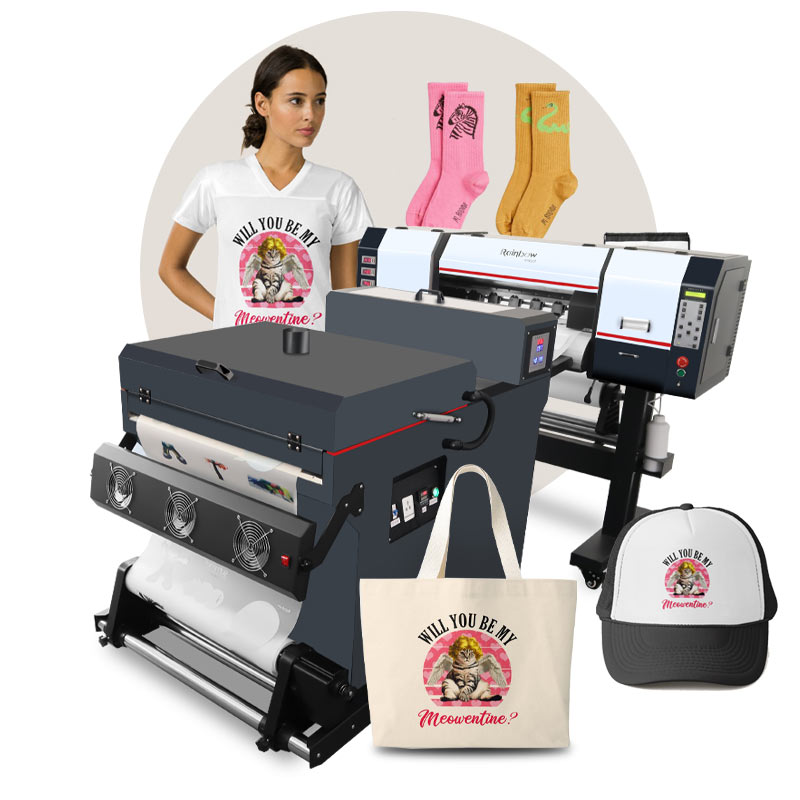DTF Printing Demystified: Whatever You Required to Learn About Direct-to-Film
DTF Printing Demystified: Whatever You Required to Learn About Direct-to-Film
Blog Article
Ultimate Overview to DTF Printing Techniques for Magnificent Textile Designs
Beginning on the journey of understanding DTF printing strategies can open up a globe of opportunities for creating visually captivating fabric layouts. In this overview, we will certainly check out the elaborate details of DTF printing, from grasping the fundamental basics to unraveling progressed shade strategies that can raise your designs to brand-new elevations.
Comprehending DTF Printing Basics
DTF printing, a procedure that involves moving styles from a special film to textiles using warm and pressure, forms the foundation of fabric printing strategies. This innovative approach enables top notch, vibrant designs to be perfectly transferred onto various textiles with precision and detail. The primary step in DTF printing involves creating or selecting a style that will certainly be published onto the fabric. This style is after that published onto a special movie using a DTF printer, which uses details dyes or pigments to guarantee color accuracy and toughness.
The final outcome is a stunning, resilient textile design that is washable, flexible, and immune to fading. Generally, comprehending the essentials of DTF printing is important for understanding this modern fabric printing strategy.
Selecting the Right Fabric Products
Having established the fundamental principles of DTF printing techniques for textile designs, the following crucial factor to consider exists in selecting the ideal fabric products to complement this cutting-edge procedure successfully. In addition, the stretchability of these products can fit the warm transfer procedure involved in DTF printing without misshaping the layout. By selecting the best textile products, developers can optimize the capacity of DTF printing to create magnificent and lasting textile styles.

Grasping the Printing Process
To excel in DTF printing methods for fabric layouts, mastering the printing process is important for accomplishing consistent and high-quality results. The temperature, stress, and duration of warmth application need to be thoroughly managed to make certain proper adhesion of the design to the fabric. By honing each of these steps in the printing procedure, developers can constantly create sturdy and stunning fabric styles with DTF printing methods.
Enhancing Layouts With Color Techniques

Furthermore, experimenting with shade gradients can bring a sense of motion and fluidity to the design. By blending colors flawlessly, a gradient result can be accomplished, adding a modern-day and dynamic touch to the fabric design. Furthermore, making use of color obstructing strategies can develop striking and strong visuals by juxtaposing different strong colors in distinctive areas of the layout.
Moreover, incorporating metallic or neon shades can supply a special and distinctive component to the fabric design, making it stand apart and exude a feeling of vibrancy. When tactically applied, these shade strategies can elevate the overall aesthetic appeal of fabric styles, making them a lot more memorable and captivating.
Troubleshooting Common DTF Printing Issues
After discovering various shade techniques to enhance fabric designs, it is vital to deal with usual DTF printing issues that may emerge throughout the manufacturing process. One common issue is bad adhesion, which can result from inappropriate curing read the full info here times or temperatures. To resolve this issue, make certain that the healing settings are exact which the glue made use of is ideal for the certain textile being printed on. One more frequent difficulty is shade variances, where shades may show up in different ways than anticipated. This can be triggered by inaccurate color profiles or settings in the printing software program. To tackle this, double-check the shade settings and accounts to ensure they match the designated style. Additionally, issues with photo clearness and intensity can occur because of low-resolution pictures or inappropriate printing methods. To resolve this, always use high-grade pictures and change the printing setups for optimal quality. By recognizing these typical issues and carrying out the necessary troubleshooting actions, you can boost the general top quality of your DTF printed textile layouts.
Conclusion
In verdict, understanding DTF printing strategies is necessary for developing sensational textile layouts. With practice useful link and attention to detail, one can develop distinct and beautiful textile designs making use of DTF printing strategies.
)))))
DTF printing, a procedure that involves transferring styles from an unique movie to fabrics making use of warmth and pressure, creates the structure of fabric printing methods.Having developed the fundamental concepts of DTF printing methods for fabric designs, the next critical factor to consider exists in picking the ideal textile materials to match this ingenious procedure successfully. By selecting the best fabric products, designers can make the most of the possibility of DTF printing to develop magnificent and reference durable fabric styles.
To succeed in DTF printing strategies for fabric layouts, mastering the printing procedure is essential for attaining high-quality and regular results. DTF Printing. By developing each of these actions in the printing procedure, designers can regularly produce sensational and resilient fabric designs with DTF printing methods
Report this page